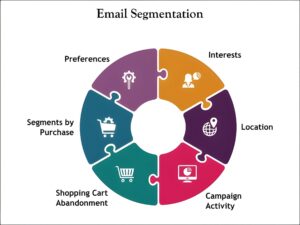Machine Learning in Customer Behavior Prediction: Transforming Business with Data-Driven Insights
In today’s highly competitive marketplace, understanding customer behavior is no longer a luxury-it’s a necessity. With the rapid advancements in artificial intelligence (AI) and data science, machine learning (ML) has emerged as a powerful tool that enables businesses to predict customer actions, preferences, and future needs with remarkable accuracy. This article explores how machine learning in customer behavior prediction is reshaping industries by driving more informed marketing strategies, improving customer engagement, and boosting overall ROI.
What is Machine Learning in Customer Behavior Prediction?
Machine learning refers to algorithms that improve automatically through experience by analyzing vast amounts of data. When applied to customer behavior prediction, ML models sift through historical data-such as purchase history, browsing patterns, and demographic information-to identify trends and forecast future behaviors. This predictive power enables businesses to anticipate customer needs and tailor their offerings accordingly.
Key Components
- Data Collection: Gathering behavioral data from various sources like websites, CRM software, and social media.
- Feature Engineering: Transforming raw data into informative features that machine learning models can understand.
- Model Selection: Choosing appropriate algorithms such as decision trees, neural networks, or clustering for prediction tasks.
- Model Training & Validation: Feeding labeled data to the model while testing its accuracy on unseen data.
- Prediction & Deployment: Implementing the model to offer real-time insights into customer behavior.
Benefits of Using Machine Learning for Customer Behavior Prediction
Integrating machine learning into customer analytics opens tremendous opportunities for businesses of all sizes. Some key benefits include:
- Enhanced Personalization: ML models enable hyper-personalized marketing campaigns by predicting individual preferences and purchase intent.
- Improved Customer Retention: By identifying churn risks early, companies can proactively engage customers and reduce turnover.
- Optimized Marketing Spend: Predictive analytics help allocate advertising budgets more effectively by targeting high-potential leads.
- Increased Sales and Revenue: Anticipating cross-selling and upselling opportunities drives higher conversion rates.
- Better Inventory Management: Predict customer demand patterns to balance stock levels and reduce wastage.
Popular Machine Learning Techniques for Customer Behavior Prediction
Depending on the business goal and data type, different ML methods are leveraged to forecast customer actions:
| Technique | Description | Use Cases |
|---|---|---|
| Classification Algorithms | Models like Logistic Regression, Random Forest classify customers into groups (e.g., likely to buy/don’t buy). | Churn prediction, customer segmentation |
| Regression Analysis | Predicts continuous outcomes such as amount spent or lifetime value. | Revenue forecasting, purchase amount prediction |
| Clustering | Unsupervised learning to identify natural groupings within customer data. | Behavioral segmentation, targeted marketing |
| Neural Networks | Deep learning models that capture complex relationships in large datasets. | Recommendation engines, sentiment analysis |
| Natural Language Processing (NLP) | Analyzes text data from reviews, chatlogs to understand customer sentiment and intent. | Customer feedback analysis, service enhancements |
Real-World Case Studies: Machine Learning Driving Customer Behavior Insights
Many leading companies have embraced ML-powered customer behavior prediction with impressive results:
1. Amazon’s Recommendation Engine
Amazon uses advanced machine learning models to analyze each customer’s browsing and purchasing history. This allows them to deliver extremely relevant product recommendations which reportedly generate 35% of the company’s revenue.
2. Netflix’s Personalized Content Suggestions
Netflix implements sophisticated ML algorithms to predict what content a subscriber might enjoy based on viewing habits, time spent, and ratings. This personalization reduces churn and maximizes user satisfaction.
3. Starbucks’ Predictive Marketing
Starbucks leverages ML for predictive analytics to understand where and when customers are likely to visit. Their mobile app harnesses this data to send personalized offers, increasing store visits and sales.
Practical Tips for Implementing Machine Learning in Your Customer Behavior Strategy
- Start with Clean, High-Quality Data: Ensure your customer data is accurate, comprehensive, and well-organized for effective model training.
- Choose the Right Algorithms: Experiment with different ML models suited to your prediction problem to find the best fit.
- Leverage Cloud Tools: Platforms like AWS, Google Cloud, or Azure provide scalable ML and AI services ideal for businesses of every size.
- Integrate Predictions into Workflows: Connect your model outputs directly to CRM, email marketing, or sales platforms to act on insights fast.
- Continuously Monitor and Update Models: Customer behavior evolves. Retrain models regularly to maintain accuracy and relevance.
Challenges and Considerations for Machine Learning in Customer Behavior Prediction
While the potential is vast, deploying ML in customer behavior prediction comes with hurdles:
- Data Privacy: Strict regulations such as GDPR require careful management of customer data.
- Bias and Fairness: ML models can unintentionally reinforce existing biases if training data isn’t diverse or balanced.
- Interpretability: Complex models, especially deep learning ones, may lack transparency making it harder for decision-makers to trust results.
Conclusion
Machine learning in customer behavior prediction is revolutionizing how businesses interact with their audiences by turning vast amounts of data into actionable insights. It offers unmatched precision in understanding what customers want, enabling hyper-personalized experiences that drive loyalty and growth. While challenges exist, especially around data ethics and model maintenance, the benefits far outweigh the risks for companies ready to embrace data-driven marketing. By applying the right techniques and maintaining a customer-centric approach, organizations can harness machine learning to not only predict behavior but also shape future success.
Are you ready to explore how machine learning can empower your business? Start by analyzing your customer data and experiment with predictive models to unlock new opportunities for growth and innovation.









